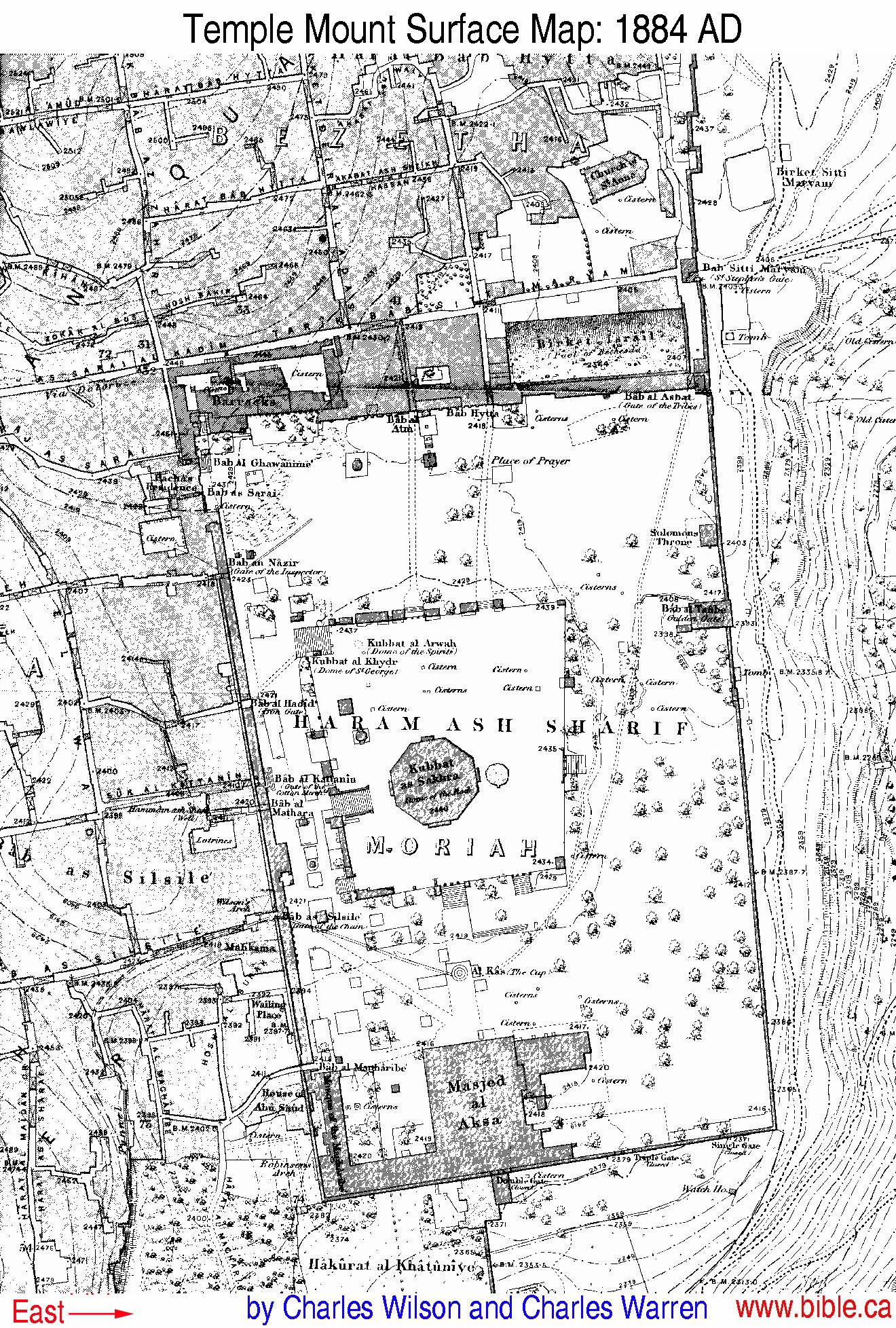The now Al-Aqsa mosque is the building that, with its surroundings, was in about 1120 made available by king Baldwin
to the newly formed group of knights of the "Poor Fellow-Soldiers of
Christ and of the Temple of Solomon", later simply called Templars. In 1845 Addison described its preceding history as follows.
"To the south of this holy Mussulman temple (now Dome of the Rock, TN), on the extreme edge of the summit of Mount Moriah, and resting against the modern walls of the town of Jerusalem, stands the venerable christian church of the Virgin, erected by the Emperor Justinian (ruled 527-565), whose stupendous foundations, remaining to this day (so in 1845, TN) fully justify the astonishing description given of the building by Procopius.
That writer informs us that in order to get a level
surface for the erection of the edifice, it was necessary, on the east
and south sides of the hill, to raise up a wall of masonry from the
valley below, and to construct a vast foundation, partly composed of
solid stone and partly of arches and pillars (today known as King Solomon's stables. All of the Temple plateau was in fact erected not by Justinian but by King Herod in about 20 BC, during his reconstruction of the Second Jewish Temple, TN). The stones were of such magnitude, that each block required to be
transported in a truck drawn by forty of the emperor’s strongest oxen;
and to admit of the passage of these trucks it was necessary to widen
the roads leading to Jerusalem.
The forests of Lebanon yielded their choicest cedars for the timbers of the roof, and a quarry of variegated marble, seasonably discovered in the adjoining mountains, furnished the edifice with superb marble columns. The interior of this interesting structure, which still remains at Jerusalem, after a lapse of more than thirteen centuries, in an excellent state of preservation, is adorned with six rows of columns, from whence spring arches supporting the cedar beams and timbers of the roof; and at the end of the building is a round tower, surmounted by a dome.
The vast stones, the walls of masonry, and the subterranean colonnade raised to support the south-east angle of the platform whereon the church is erected, are truly wonderful, and may still be seen by penetrating through a small door, and descending several flights of steps at the south-east corner of the inclosure.
Adjoining the sacred edifice the emperor erected hospitals, or houses of refuge, for travellers, sick people, and mendicants of all nations; the foundations whereof, composed of handsome Roman masonry, are still visible on either side of the southern end of the building."

No comments:
Post a Comment